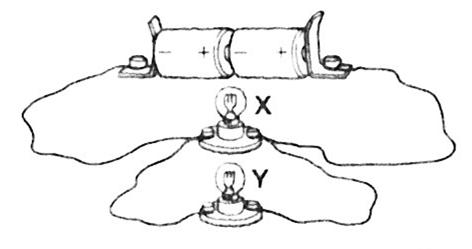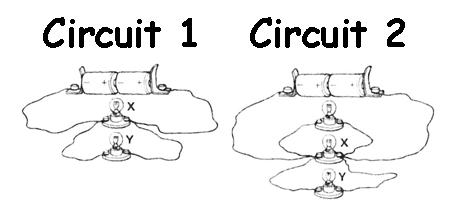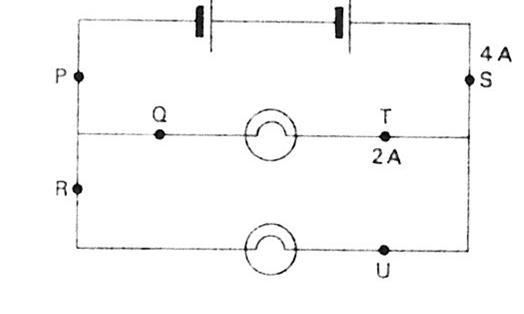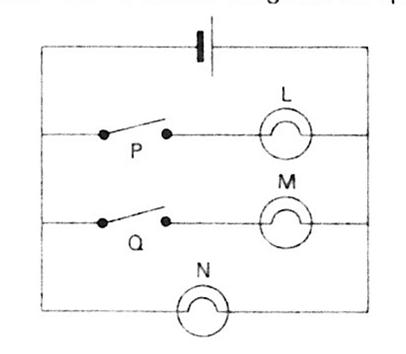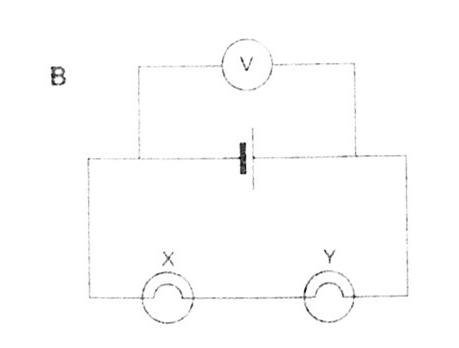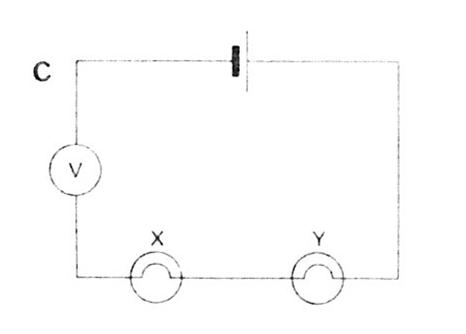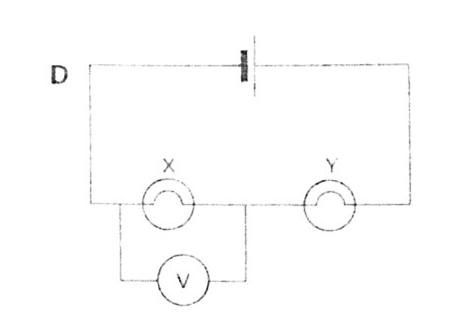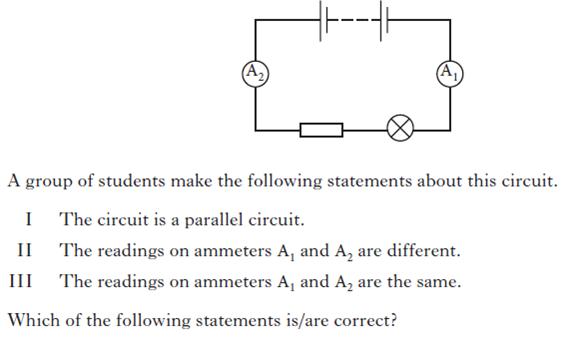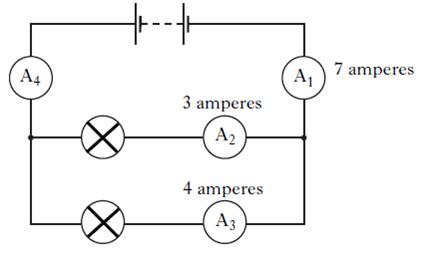| . 1 pt(s). |
Look at the circuit below. Both bulbs are identical. Bulb X would be
|
||
| A. | dimmer than bulb Y | ||
| B. | brighter than bulb Y | ||
| C. | just as bright as bulb Y | ||
| . 1 pt(s). |
Look at the circuit below. Both bulbs are identical. Bulb X is
|
||
| A. | dimmer than bulb Y | ||
| B. | brighter than bulb Y | ||
| C. | just as bright as bulb Y | ||
| . 1 pt(s). |
Two circuits were set up as shown below. All the bulbs in both circuits were identical. Comparing circuits 1 and 2, bulb X is
|
||
| A. | dimmer than in circuit 1 | ||
| B. | brighter than in circuit 1 | ||
| C. | the same as in circuit 1 | ||
| . 1 pt(s). |
Look at the circuit diagram below. The current at position S is 4A. The current at position T is 2A. What is the current at position P?
|
||
| A. | 0A | ||
| B. | 2A | ||
| C. | 4A | ||
| D. | 6A | ||
| E. | 8A | ||
| . 1 pt(s). |
Look at the circuit diagram below. The current at position S is 4A. The current at position T is 2A. What is the current at position R?
|
||
| A. | 0A | ||
| B. | 2A | ||
| C. | 4A | ||
| D. | 6A | ||
| E. | 8A | ||
| . 1 pt(s). |
Look at the circuit diagram below. The current at position S is 4A. The current at position T is 2A. What is the current at position Q?
|
||
| A. | 0A | ||
| B. | 2A | ||
| C. | 4A | ||
| D. | 6A | ||
| E. | 8A | ||
| . 1 pt(s). |
Look at the circuit diagram below. For bulb M to light up,
|
||
| A. | only switch P must be closed | ||
| B. | only switch Q must be closed | ||
| C. | both switches must be closed | ||
| D. | neither switch need be closed | ||
| . 1 pt(s). |
Look at the circuit diagram below. For bulb N to light up,
|
||
| A. | only switch P must be closed | ||
| B. | only switch Q must be closed | ||
| C. | both switches must be closed | ||
| D. | neither switch need be closed | ||
| . 1 pt(s). |
The lights in your home are wired | |
| A. | in parallel, so that if one fails the remainder stay on | |
| B. | in series, so that if one fails the remainder stay on | |
| C. | in parallel, so that if one fails all the lights go off | |
| D. | in series, so that if one fails all the lights go off | |
| . 1 pt(s). |
In which of the following circuits does the voltmeter measure the voltage across bulb X? | ||
| A. |
|
||
| B. |
|
||
| C. |
|
||
| D. |
|
||
| . 1 pt(s). |
A circuit is set up as shown.
|
||
| A. | I only | ||
| B. | II only | ||
| C. | III only | ||
| D. | I and II only | ||
| E. | I and III only | ||
| . 1 pt(s). |
A circuit is set up as shown.
|
||
| A. | I only | ||
| B. | II only | ||
| C. | I and II only | ||
| D. | I and III only | ||
| E. | I, II and III | ||
| . 1 pt(s). |
A circuit is set up. The readings on ammeters A1, A2 and A3 are shown. (an ampere is the same as an amp, A) The reading on ammeter A4 is
|
||
| A. | 1 ampere | ||
| B. | 7 ampere | ||
| C. | 10 ampere | ||
| D. | 11 ampere | ||
| E. | 14 ampere | ||
| . 1 pt(s). |
A circuit is set up as shown.
|
||
| A. | A | ||
| B. | B | ||
| C. | C | ||
| D. | D | ||
| E. | E | ||



